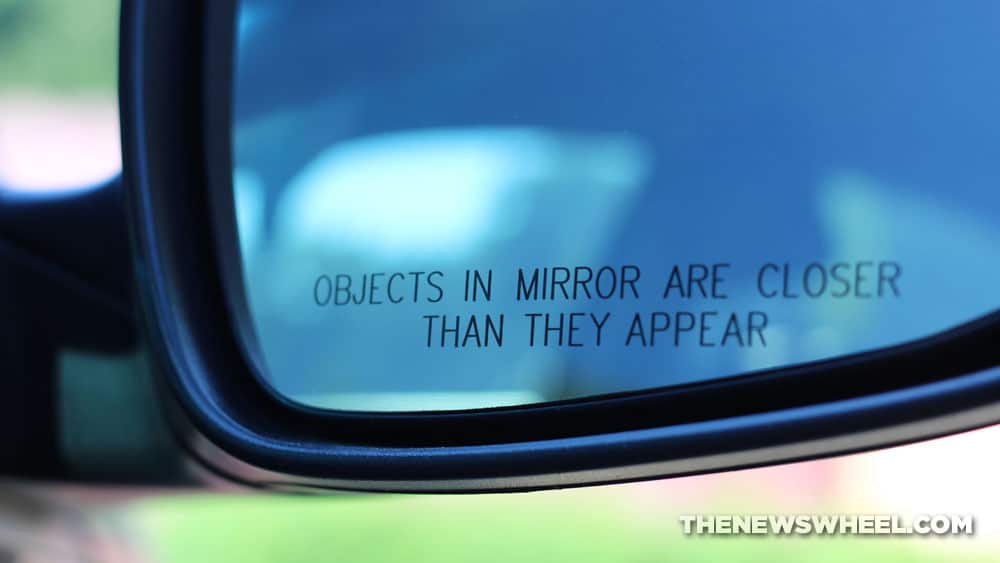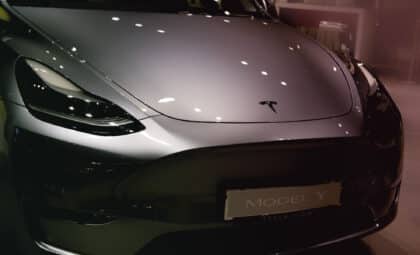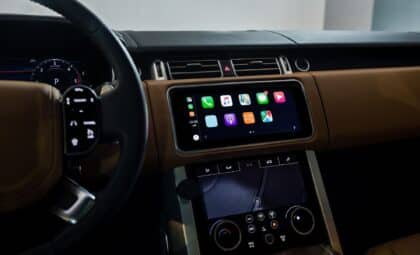Remember that classic moment in Jurassic Park when the T-Rex is chasing down the Jeep, and its menacing jaws are reflected in the side-view mirror?
What made the joke funny — and suspenseful — was the presence of the disclaimer on the side mirror that stated, “Objects in mirror are closer than they appear.” It’s a notice we’ve all seen on our own — or our parents’ — car mirrors, but we’ve probably taken is presence for granted. Have you ever wondered why a car’s mirror says this, and why the mirror was designed that way?
An Immersive Virtual Driving Experience: See the virtual reality simulation Chevrolet brought to the Detroit Auto Show
“Objects in mirror are closer than they appear” from Jurassic Park
Photo: Universal Pictures
Most driver-side mirrors don’t carry the “Objects in mirror are closer than they appear” statement printed on them, but passenger mirrors do. That’s because they’re each different types of mirrors: the driver-side mirror is a flat, plane mirror (like one in your bathroom), while the passenger-side mirror is convex, with its center rounded outward. Plane mirrors reflect light rays from objects in a consistent, unaltered path, while convex mirrors allow rays from different directions to intersect at a focal point “within” the mirror.
The reason these two mirrors are shaped differently is because of purpose and function. The driver-side mirror needs to be accurate for traffic and distance reasons, while the passenger-side mirror needs to provide a wider visual field and to compensate for blind spots and its distance from the driver.
Thus, the inclusion of the disclaimer “Objects in mirror are closer than they appear” alerts drivers and passengers to the fact that, due to the curvature of the passenger-side mirror, the “distance” of the object as it appears on the mirror’s surface is different in real life than what it looks to be on the mirror’s reflective surface.
Who knew that a movie about cloning dinosaurs could teach us about science?
Vehicle Research Information: Notable changes on the 2019 Chevrolet Cruze
The News Wheel is a digital auto magazine providing readers with a fresh perspective on the latest car news. We’re located in the heart of America (Dayton, Ohio) and our goal is to deliver an entertaining and informative perspective on what’s trending in the automotive world. See more articles from The News Wheel.












